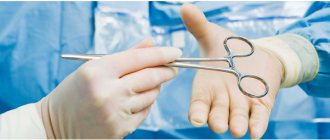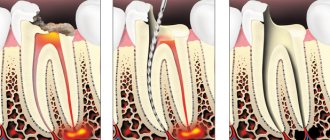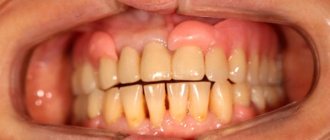Painkillers and NSAIDs (non-steroidal anti-inflammatory drugs) can in most cases be found in the medicine cabinet in every home. This is a very common drug group. Medicines are taken to reduce fever, relieve pain, and eliminate other discomfort and symptoms.
Do they pose a danger to the human body?
«Everything is medicine and everything is poison - it's all a matter of dose».
Paracelsus
The danger of overdosing on painkillers
In some cases, when indicated, doctors prescribe opioid treatment to patients.
These are very dangerous drugs that cause drug addiction quite quickly. All you have to do is not follow the doctor’s prescription, increase the period of use and dosage specified in the instructions or allowed by the doctor, and the dependence on the pills is in your pocket.
Opioids have great analgesic activity, so their abuse can easily lead to severe poisoning and even death.
- You can't convince me to get treatment
? - We will help you with motivation for treatment. As a rule, it is difficult for loved ones to persuade or force an addict to undergo treatment. World experts have developed EFFECTIVE motivation schemes, using which you can lead an addict to the decision to seek help. 8
Why are the shapes different?
Initially, there were only two ways to deliver medicine to the body: swallowed or applied; other options were not available to doctors of the past.
But with the development of medicine, it has become clear that these options do not always work. When swallowed, the drug has a long journey to travel. Before getting to the right place, the tablet passes through the aggressive environment of the stomach. And after absorption, the substances enter the liver through the bloodstream, where toxins are neutralized and the medicine can become inactive before reaching the target organ.
Also, some drugs can negatively affect the functioning of the gastrointestinal tract. Cause nausea, vomiting or simply not work if the stomach or intestines are not in order and absorption is impaired.
“A classic example is when we changed a patient’s drug,” says GMS Clinic therapist Andrey Besedin, “during exacerbations of gastric ulcer, duodenal ulcer, or after surgery on the gastrointestinal tract. In this case, it is better to choose intramuscular or intravenous administration."
There are situations when it is necessary to administer medications intravenously. Most often this is due to urgency, but there are drugs that are destroyed in the gastrointestinal tract. For example, some antibiotics are available only in the form of injections, and in this case injections cannot be avoided.
“Any intramuscular, subcutaneous, intravenous injection is a small operation,” explains Andrey Besedin, “during which we violate the integrity of the body, skin, muscles, depending on what we do. Therefore, if possible, it is better to use tablets and capsules.”
There are medications that have serious effects on the entire body when taken in the form of tablets or injections. For such cases, local forms were invented. Thus, hormones in creams and nasal spray are useful for skin manifestations and allergic rhinitis, but the same hormones in large doses can cause serious consequences with long-term use of tablets or intravenous injections.
For children, medications are available in the form of chewable tablets, drops, or reduced-size tablets, so as not to turn every dose of medication into a battle or cause the association between treatment and pain. Unfortunately, this is not always possible, especially in children's hospitals.
“There are no unambiguous dogmas in medicine,” says Andrey Besedin, “in each situation we choose the type of drug administration individually, depending on what goals we want to achieve with a particular patient.”
Causes of poisoning
More than 12% of drug poisoning and overdose cases involve NSAIDs. Non-opioid analgesics are widely available and can be purchased at any pharmacy, as they are vital supplies. However, it is impossible to buy narcotic painkillers without a prescription. Their free distribution without a prescription is punishable by law. Painkillers often contain codeine, which is sought after by drug addicts.
Why does poisoning occur with painkillers:
- failure to comply with instructions or doctor's prescription;
- incorrect reception;
- doctor's error;
- increasing dosage;
- lack of knowledge about taking medication;
- low body resistance;
- combination with alcohol, drugs, other drugs;
- cumulative effect due to prolongation of the course of treatment;
- taking the drug for recreational purposes;
- intake during pregnancy;
- when attempting suicide.
Among the most dangerous non-steroidal anti-inflammatory drugs is phenacetin, previously contained in such drugs as Sedalgin and Askofen. This analgesic quite often caused the development of allergic reactions and disruption of internal organs. Today, a substance used as an antipyretic, paracetamol, is used to a greater extent in medicine.
If the patient takes the medicine as prescribed and prescribed by the doctor, an overdose of analgesics and local anesthetics occurs quite rarely. However, most often an overdose of anesthetics is used by drug addicts to achieve euphoria. Pharmacy drugs have long become a source of cheap “high” for them.
Main groups of drugs for pain
If you feel the slightest pain, do not immediately take painkillers. After all, this means that something is wrong in the body’s functioning.
All medications that eliminate pain can be divided into five parts:
- Analgin and paracetamol. The first drug is more toxic, the second relieves mild to moderate pain. Both drugs have an antipyretic effect.
- Triptans. Indicated for a confirmed diagnosis of migraine. Include: Amigrenin, Relpax, Zomig.
- Nonsteroidal anti-inflammatory drugs. Includes ibuprofen, ketorol, diclofenac. In addition to pain relief, they relieve inflammation, but have many side effects, mostly harmful to the stomach. Suitable for relieving muscle pain.
- Combined. The complex may contain an anti-inflammatory component, paracetamol, antispasmodic, caffeine. More effective, but less safe.
- Antispasmodic. The main ones are paverine and drotavirine. They do not directly relieve pain, but have an effect by relieving spasms. The drug has a relaxing effect on a tense muscle, blood flow is resumed and the normal functioning of the organ is restored.
Thus, first of all, it is better to take an antispasmodic; perhaps the pain is caused by painful contraction of the muscles of the internal organs.
Analgesic drugs relieve pain by acting on brain receptors, but do not eliminate the real cause. For a certain time, the pain will subside, but the health problem will remain.
Narcotic painkillers are prescribed by a doctor strictly according to indications; they are prohibited for self-medication and are available only with a prescription.
Overdose symptoms
Symptoms of an overdose of painkillers and NSAIDs depend on the individual characteristics of the human body, the drug taken and its dosage. In some cases, a person may become ill even after taking a therapeutic dose. Therefore, in order to prevent poisoning from local anesthetics and narcotic analgesics, it is necessary to strictly follow the instructions, which necessarily indicate the maximum daily dosages.
Acute poisoning with narcotic analgesics
Painkillers have different effects on the body, so the dose that can lead to intoxication is different.
Signs of poisoning:
- dizzy;
- be sick;
- vomiting occurs;
- It's difficult to breathe;
- weakness, drowsiness;
- increased sweating;
- loss of consciousness;
- pallor, cyanosis;
- the temperature drops;
- constipation, upset stomach;
- weakening of the pulse;
- swelling;
- pressure drop;
- convulsions, tremors.
Among the first signs: lethargy, drowsiness, lethargy, breathing problems. The condition is deteriorating quite quickly. Common complications that arise from an overdose of anesthetic: cerebral edema, pulmonary edema, cardiac arrest, renal failure. A severe overdose of local anesthetics manifests itself in paralysis of the respiratory center. If you do not call an ambulance in time, the risk of death is close to 75%.
Free phone number for a narcologist in Moscow and throughout Russia: 8 (800) 333-20-07. .
It is important to understand that a person who is poisoned by pills can fall into a coma. Even after emerging from this state, irreversible health consequences are possible: mental disorders, dysfunction of certain internal organs.
For recreational purposes, addicts often overdose on painkillers such as Tempalgin or Nurofen to achieve euphoria. Often, to enhance the effect, pharmaceutical drugs are mixed with alcohol and barbiturates, which significantly increases the intoxication of the body and increases the risk of death.
Do you want to know about the cost of services?
8 call our specialist
Non-narcotic analgesics
Non-opioid and non-steroidal anti-inflammatory drugs in pharmacology include drugs that do not have narcotic potential and are not used by drug addicts. These medications are used as anti-inflammatory, antipyretic, painkillers, etc. Regarding doses, for example, if the daily dose, according to the instructions, is 4 grams, then death can occur even after consuming 15-20 g.
Symptoms of Paracetamol overdose:
- liver dysfunction (the medicine is a dangerous toxin for the liver, causes bleeding disorders, hepatitis);
- disruption of the gastrointestinal tract (stomach pain, nausea, vomiting);
- damage to the central nervous system (drowsiness, weakness, lethargy);
- metabolic disorder;
- low pressure;
- renal failure (nephritis and other kidney diseases);
- disruption of the cardiovascular system due to general intoxication;
- encephalopathy.
Acute poisoning can last for 10-12 hours. You can also be poisoned by the drug if you use it for a long time in an increased dosage, as it accumulates in the tissues of the internal organs. Paracetamol is part of many modern drugs sold in pharmacies, including Spazmolex and Pentalgin. These are dangerous pharmaceutical drugs that addicts use to get a “high.” Often such substances are used for the purpose of suicide attempts.
Anonymous 24 hours a day Activity is licensed Patient accompaniment
Full range of narcology services:
- tests
- drug testing
- detox
- encoding
- psychiatry
- binder
- withdrawal symptoms
8+7
Salicylic acid and salicylates
It is quite easy to get poisoned by this common drug among people; it is enough to consume 10-40 g. The dosage of tablets is individual and depends on the condition of the patient’s body. Death is possible in 2% of cases.
Signs of salicylate poisoning:
- your head is spinning, your ears are ringing, your consciousness is confused;
- headache;
- hallucinations, hearing loss;
- chills, cramps;
- euphoric sensations;
- pain in the abdomen, under the ribs, heartburn;
- nausea, vomiting, upset stomach;
- violation of movement coordination;
- excited state;
- deterioration of cognitive functions;
- disruption of the functioning of the heart and blood vessels, internal organs;
- arrhythmia and tachycardia;
- increased fatigue;
- breathing problems, shortness of breath.
When using salicylic acid, for example, Aspirin in large quantities, internal bleeding may occur.
Rules for taking painkillers
Painful sensations can be different: sudden and sharp, aching or pressing, increasing or paroxysmal. It is important to remain calm and try to determine what exactly is causing the discomfort.
In some cases, the body is able to overcome mild pain on its own. And with minor discomfort, you do not need to immediately resort to painkillers, so that the body does not forget how to cope with pain on its own. Otherwise, any type of pain will have to be treated with pills, which will be harmful to health.
Severe pain that occurs regularly and is difficult to treat on your own requires seeking medical help.
Basic rules for using pain medications:
- Take on time. At the first symptoms, take a tablet, as the effect of the medicine will occur only after 20-30 minutes. For example, if you have a toothache, you shouldn’t wait for it to get worse. For migraines, it is important to take painkillers at the onset of an attack.
- For elderly people, it is better to replace the tablet form with a local drug. For example, for pain in the knees or elbows, it is better to use a gel, ointment or a special patch.
- Avoid alcohol. While taking analgesics, alcoholic drinks are prohibited, as they can enhance or weaken the effect of the drug. For hangover syndrome, Paracetamol is indicated, which does not irritate the stomach.
- Do not take on an empty stomach. To protect the mucous membrane, it is advisable to drink at least kefir, if the instructions do not provide for use on an empty stomach. Take the tablet properly with warm water or tea in sufficient quantities. It is better when the tablet enters the stomach well moistened.
- Do not divide the tablet in half. A reduced dose will not have an effect, and a damaged coating will not protect the stomach from irritation and the main active ingredient will not reach the intestines.
- Strictly follow the dosage both for one application and per day, as indicated in the instructions. Exceeding will lead to side effects and worsening of the condition. As a rule, more than two tablets at a time are not allowed. Also take into account the need for a break between doses, the duration of which is indicated in the instructions.
- Do not combine drugs from different groups of analgesics. Do not take analgin, aspirin, ibuprofen, paracetamol and piroxicam at the same time. As a result, the effect will not improve, and a negative effect may manifest itself in the form of nausea, weakness, dizziness, and respiratory failure. It is allowed to alternate doses, but do not take two different tablets at once.
- Do not take the same drug often. To avoid addiction and loss of effect from use. Dependence develops especially quickly on opioid analgesics.
- Do not use expired medications. Expired medications are deadly.
Emergency help
The consequences of an overdose of painkillers and drug poisoning are quite serious; without timely emergency medical care, a person can die. If you know that a loved one has taken too many medications, is using pharmaceutical drugs, and you see that he is turning pale and looks sick, you should immediately call a narcologist from the Center for Healthy Youth to your home. Delay in this case can cost your life. Of course, specialists at home will do everything possible to help the victim, but it is necessary to hospitalize him in a hospital for examination, intensive care and resuscitation.
Overdose of painkillers - what to do?
- Call our drug treatment center.
- Make sure the victim is conscious.
- Find out which particular drug caused the intoxication of the body.
- Try to determine the approximate dose.
- Lay the victim on his side and ensure that he does not choke on vomit.
- Provide fresh air, ventilate the room, remove clothing that may block breathing.
- Monitor your blood pressure, pulse and breathing.
- In case of mild or moderate poisoning, it is necessary to rinse the stomach, give the person activated charcoal or an enterosorbent known to you.
- If a person is not breathing or has no pulse, cardiopulmonary resuscitation is necessary.
If a person’s condition is serious, doctors at the drug treatment clinic begin to provide assistance on the way to the hospital. Naloxone is most often used for poisoning with narcotic analgesics. It is an opioid receptor antagonist, an antidote, which is widely used in modern narcology. It is used when coding alcoholism and drug addiction to reduce cravings for chemicals.
If the victim has trouble breathing, he may need a ventilator. Doctors prescribe treatment based on tests, examinations, examinations and diagnostics. It is important to understand that therapy is always individual and depends on existing indications and contraindications.









